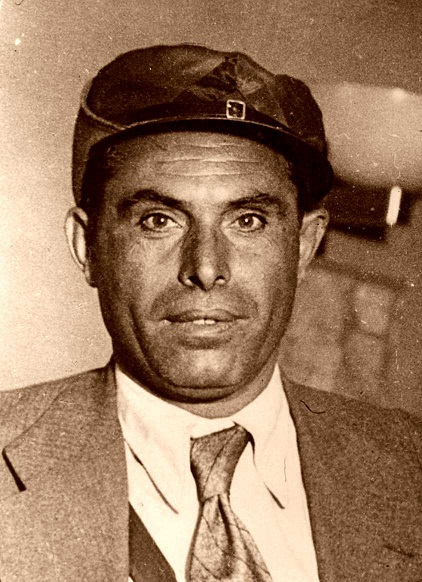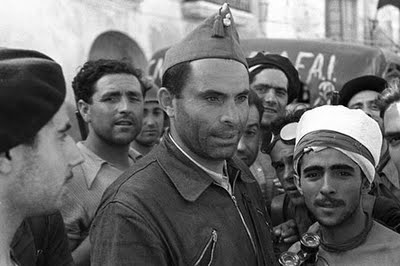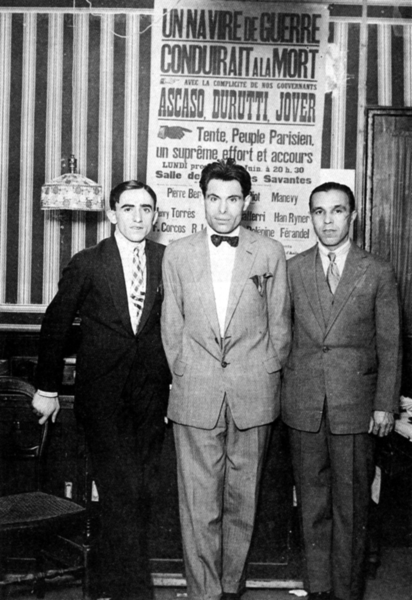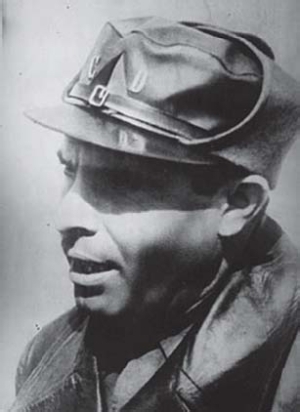<Back to Index>
- Philosopher Joseph Arthur Comte de Gobineau, 1816
- Folk Songwriter Woodrow Wilson "Woody" Guthrie, 1912
- Anarchist Revolutionary José Buenaventura Durruti Dumange, 1896
PAGE SPONSOR


José Buenaventura Durruti Dumange (14 July 1896 – 20 November 1936) was a central figure of Spanish anarchism during the period leading up to and including the Spanish Civil War.
Durruti was born in León, Spain. He started work at the age of 14 in the railway yard in León. In 1917 the socialist Unión General de Trabajadores (UGT) called a strike in which Durruti was an active and prominent participant. The government brought in the Spanish Army to suppress the strike; they killed 70 people and injured more than 500 workers. 2,000 of the strikers were imprisoned without trial or legal process. Durruti escaped to France.
During his exile, Durruti worked in Paris as a mechanic. In 1920, he was persuaded to go to Barcelona to organise the workers there. In Catalonia, with Juan García Oliver, Francisco Ascaso, and a number of other anarchists, he founded Los Solidarios ("Solidarity"). Members of this group attempted unsuccessfully to murder King Alfonso XIII. In 1923 the group was also implicated in the assassination of Cardina lJuan Soldevilla y Romero, as a reprisal for the killing of an anarcho - syndicalist union activist Salvador Seguí. After Miguel Primo de Rivera seized power in Spain in 1923, Durruti and his comrades organized attacks on the military barracks in Barcelona and on the border stations near France. These attacks were unsuccessful and quite a few anarchists were killed. Following these defeats, Durruti, Ascaso and Oliver fled to Argentina. They subsequently travelled widely in Latin America, visiting Cuba and elsewhere.
Durruti
and his companions returned to Spain and Barcelona, becoming an
influential militant within two of the largest anarchist organisations in Spain at the time, the
Federación Anarquista Ibérica (FAI), and of the anarcho - syndicalist trade union Confederación Nacional del Trabajo (CNT). The influence Durruti's group gained inside the CNT caused a split, with a reformist faction under Ángel Pestaña leaving in 1931 and subsequently forming the Syndicalist Party.
On 12 November, having been persuaded to leave Aragón by the anarchist leader Federica Montseny on behalf of the government, Durruti led his militia to Madrid to aid in the defense of the city. On 19 November, he was shot while leading a counter attack in the Casa de Campoarea. (Battle of Madrid.) According to author Antony Beevor (The Spanish Civil War, 1982), Durruti was killed when a companion's machine pistol went off by mistake. At the time, the anarchists claimed he had been hit by an enemy sniper's bullet "for reasons of morale and propaganda".
Another account of Durruti's death, given in Durruti: The People Armed by Abel Paz, claims that rather than being shot by a fellow soldier he was killed by distant gunfire coming from the area around the Clinical Hospital in University City (Madrid), which had been taken over by Nationalist forces. After a fight to regain control and contact was re-established with troops cut off from communications, Durruti returned temporarily to the Miguel - Angel barracks to issue orders. A message from Liberto Roig arrived informing Durruti that the Clinical Hospital was in the process of being evacuated. Alarmed, he asked his Chauffeur Julio Grave to get his car and leave immediately for the Hospital. His chauffeur gives the following testimonial:
We passed a little group of hotels which are at the bottom of this avenue (Queen Victoria Avenue) and we turned towards the right. Arriving at the big street, we saw a group of militiamen coming towards us. Durruti thought it was some young men who were leaving the front. This area was completely destroyed by the bullets coming from the Clinical Hospital, which had been taken during these days by the Moors and which dominated all the environs. Durruti had me stop the car which I parked in the angle of one of those little hotels as a precaution. Durruti got out of the auto and went towards the militiamen. He asked them where they were going. As they didn't know what to say, he ordered them to return to the front. The militiamen obeyed and Durruti returned towards the car. The rain of bullets became stronger. From the vast red heap of the clinical Hospital, the Moors and the Guardia Civil were shooting furiously. Reaching the door of the machine, Durruti collapsed, a bullet through his chest.
He
died on 20 November 1936, in a makeshift operating theatre set up in
what was formerly the Ritz Hotel at the age of 40. The bullet was
lodged in the heart, and the diagnosis was "death caused by pleural
hemorrhage". The doctors wrote a report in which the path of the bullet
and the character of the wound was recorded but not the calibre of the
bullet, since they hadn't removed it and there was no autopsy. Durruti's
body was transported across country to Barcelona for his funeral. Over
a half million people filled the streets to accompany the cortege
during its route to the Montjuïc Cemetery. It was the last large scale public demonstration of anarchist strength of numbers during the bitter and bloody Civil War. Hugh
Thomas remarks: “the death of Durruti marked the end of the classic age
of Spanish Anarchism. An Anarchist poet proclaimed that Durruti’s
nobility while living would cause ‘a legion of Durrutis’ to spring up
behind him.”

